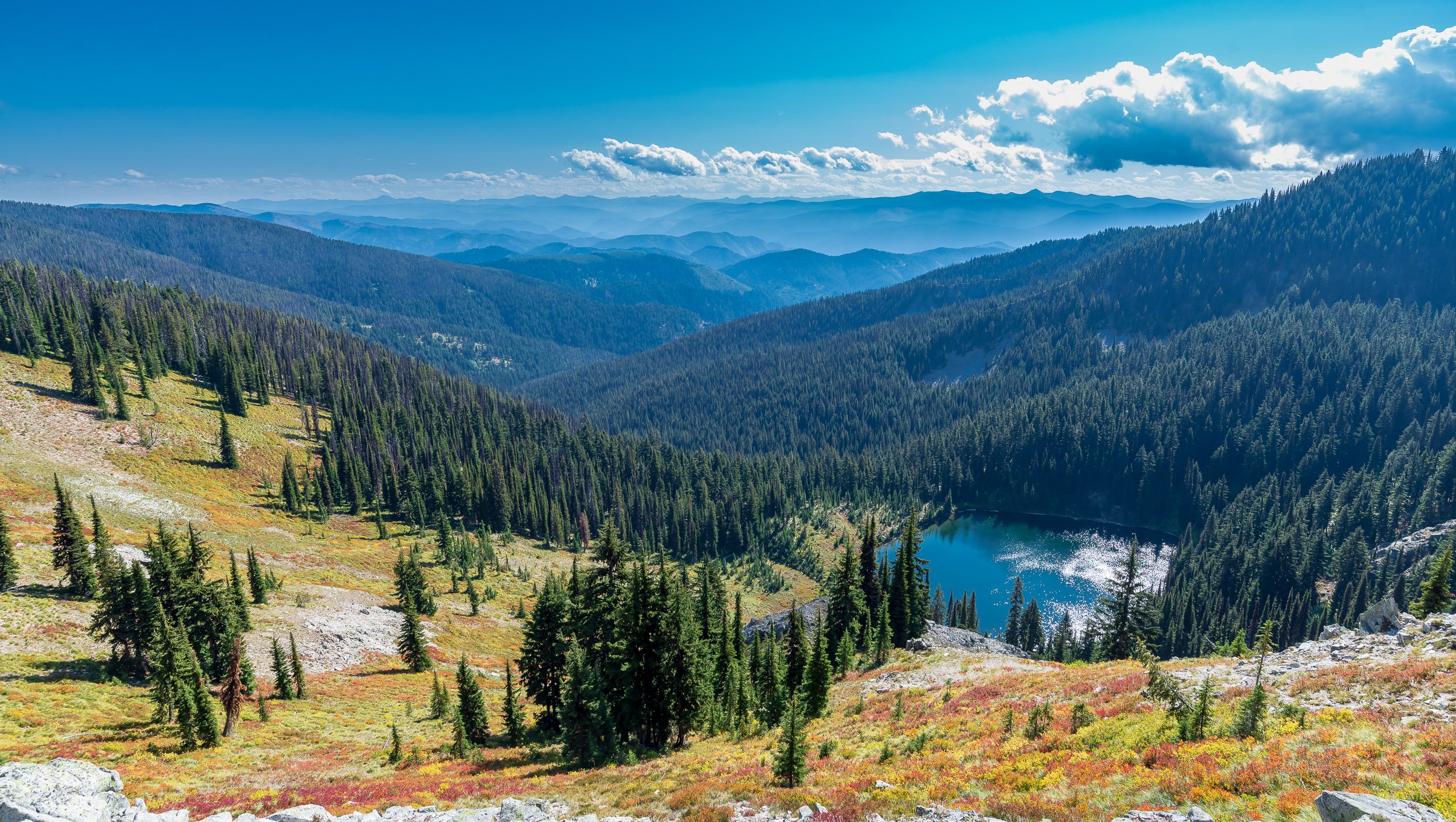
Our missing brother
Supporting efforts to recover X̂áx̂aac, grizzly bear, within the Nez Perce homeland.
Background
X̂áx̂aac was once widely dispersed throughout the Nez Perce homeland, from the peaks of the Bitterroots to the canyons of the Wallowas. The Tribe maintains deep cultural connections to grizzly bears, a reflection of our long history of living alongside X̂áx̂aac for millennia. Members of the Lewis and Clark Expedition made regular reference to grizzly bears during their visits to the Nez Perce homeland as well, including a lengthy journal entry by Captain Lewis on May 15, 1806 while in the vicinity of Kamiah, ID:
[I]t is not common to find two [grizzly bears here] precisely of the same color, and if we were to attempt to distinguish them by their colors and to denominate each color a distinct species[,] we should soon find at least twenty. [S]ome [grizzly] bear nearly white have also been seen by our hunters at this place…
[The grizzly] bear I believe to be the same here with those on the Missouri[,] but these are not as ferocious as those perhaps from the circumstance of their being compelled from the scarcity of game in this quarter to live more on roots and of course not so much in the habit of seizing and devouring living animals. [The grizzly] bear here are far from being as passive as the common black bear[;] they have attacked and fought our hunters already but not so fiercely as those of the Missouri.
Unfortunately, grizzlies were extensively trapped and hunted by early Euro-American mountain men and settlers beginning in the mid-1800s. Grizzly bears were functionally extirpated from both the Wallowa country and the upper Clearwater River basin sometime prior to the 1940s, although dispersing individuals (generally males) have been documented within the Tribe’s homeland periodically since that time. As with gray wolves, California condor, sandhill crane, Columbian sharp-tailed grouse, and many other species previously eradicated from our area, the Tribe remains committed to the recovery of X̂áx̂aac within our homeland.
Throughout the late 1990s, the U.S. Fish and Wildlife Service (FWS) explored a variety of proposals to recover grizzly bears within the Bitterroot Ecosystem, an area encompassing over 26,000 square miles of mostly U.S. Forest Service land in Idaho and Montana. In November 2000, the FWS adopted a proposal to actively restore grizzly bears as a “nonessential experimental” (10j) population, with implementation responsibilities delegated to a Citizen Management Committee. The Tribe supported the FWS’ proposal, including the 10j designation. Unfortunately, and over the strenuous objections of the Tribe, active recovery efforts were functionally canceled by the Bush Administration’s Gale Norton in late June 2001.
Current Efforts
Today, the recovery of grizzly bears within the Bitterroot Mountains depends entirely on the natural dispersal of bears from adjacent populations to the north, northeast, and southeast. To help facilitate those movements, the Tribe actively engages with the FWS; regional Forest Service units; Idaho Dept. of Fish and Game; Montana Dept. of Fish, Wildlife, and Parks; and other partners to help ensure that management actions across the landscape help support, or at least do not hinder, the natural recovery of grizzly bears within the Bitterroots. The Tribe is a formal member of the Interagency Grizzly Bear Committee’s Bitterroot Ecosystem Subcommittee and is an active participant in both the Science and Information, Education, and Outreach Teams of that group.
Be Bear Aware!
The Nez Perce people have lived alongside grizzly bears for thousands of years, a living example to communities throughout our homeland that respectful coexistence with grizzly bears is both entirely possible and can be culturally beneficial. Of critical importance to grizzly bear recovery is the minimization of human-bear conflicts, particularly with regard to public safety.
The Interagency Grizzly Bear Committee has compiled an extensive collection of resources about living and playing safely in grizzly country. Please visit that site to learn more about grizzly behavior, safe outdoor practices, responsible food storage, and ways to handle bear encounters in a way that protects both you and the bear!
